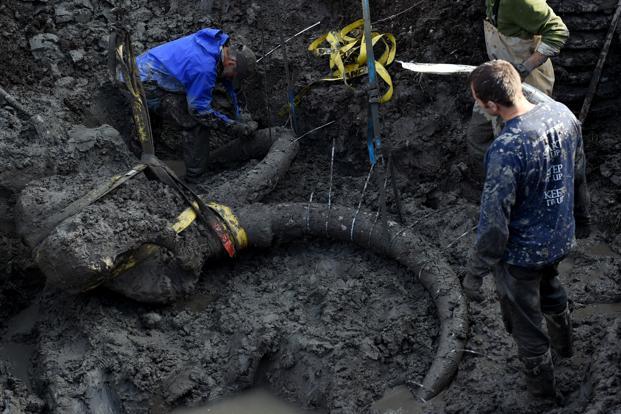-
Tips for becoming a good boxer - November 6, 2020
-
7 expert tips for making your hens night a memorable one - November 6, 2020
-
5 reasons to host your Christmas party on a cruise boat - November 6, 2020
-
What to do when you’re charged with a crime - November 6, 2020
-
Should you get one or multiple dogs? Here’s all you need to know - November 3, 2020
-
A Guide: How to Build Your Very Own Magic Mirror - February 14, 2019
-
Our Top Inspirational Baseball Stars - November 24, 2018
-
Five Tech Tools That Will Help You Turn Your Blog into a Business - November 24, 2018
-
How to Indulge on Vacation without Expanding Your Waist - November 9, 2018
-
5 Strategies for Businesses to Appeal to Today’s Increasingly Mobile-Crazed Customers - November 9, 2018
Woolly mammoth remains discovered in Michigan farm
Fisher said he believes the woolly mammoth found on Bristle’s farm was stashed there by early hunters to preserve the meat.
Advertisement
A farmer near Chelsea in Washtenaw County discovered the bones of a woolly mammoth on Monday night in a soy field. He determined the beast was a 19-year-old male that stood about 9 feet at the shoulder and lived 10-11,000 years ago. Due to the installation of the gas pipeline, and a farming schedule tied to the harvest, Bristle could only give Fisher and his team of U-M graduate and undergraduate students a single day to bring up the mammoth skeleton.
Tweets from a reputable source – more specifically, a writer for the Ann Arbor News – appeared to show the find Thursday afternoon: a muddy, fossilized woolly mammoth.
Evidence to support the claim that early humans were inhabiting the area include three basketball-sized boulders recovered next to the animal’s skeleton.
Bollinger, who has helped with the excavation, has stated that he has been digging for 45 years and never found something quite like that, during the “exciting day” of hard work.
He told Ann Arbor News that he new the find was “out of the norm”, to put it mildly. After cross-checking, he detected that it was a 3-foot-long bone, which experts later identified as the mammoth’s pelvis. The bones of the mammoth will be scrutinized by researchers for cut marks that would point to human activity.
Bristle later contacted Daniel Fisher, who teaches at UMich and directs the university’s Museum of Paleontology. That is when they found the first mammoth bones. The bones are said to have been found when farmer James Bristle and a friend were digging to place drainage tiles.
Bristle has yet to make a decision on the future of the remains.
Advertisement
Two local farmers in Michigan were preparing for soybean planting when they recovered something unusual in the field – huge bones of an ancient woolly mammoth. It took time for vegetation to spread back over the landscape”, said Fisher, “We need a more detailed analysis of the skeleton to determine how this animal lived, its health and what its life was like. “My grandson came over to look at it, he’s 5 years old, he was speechless”.




























